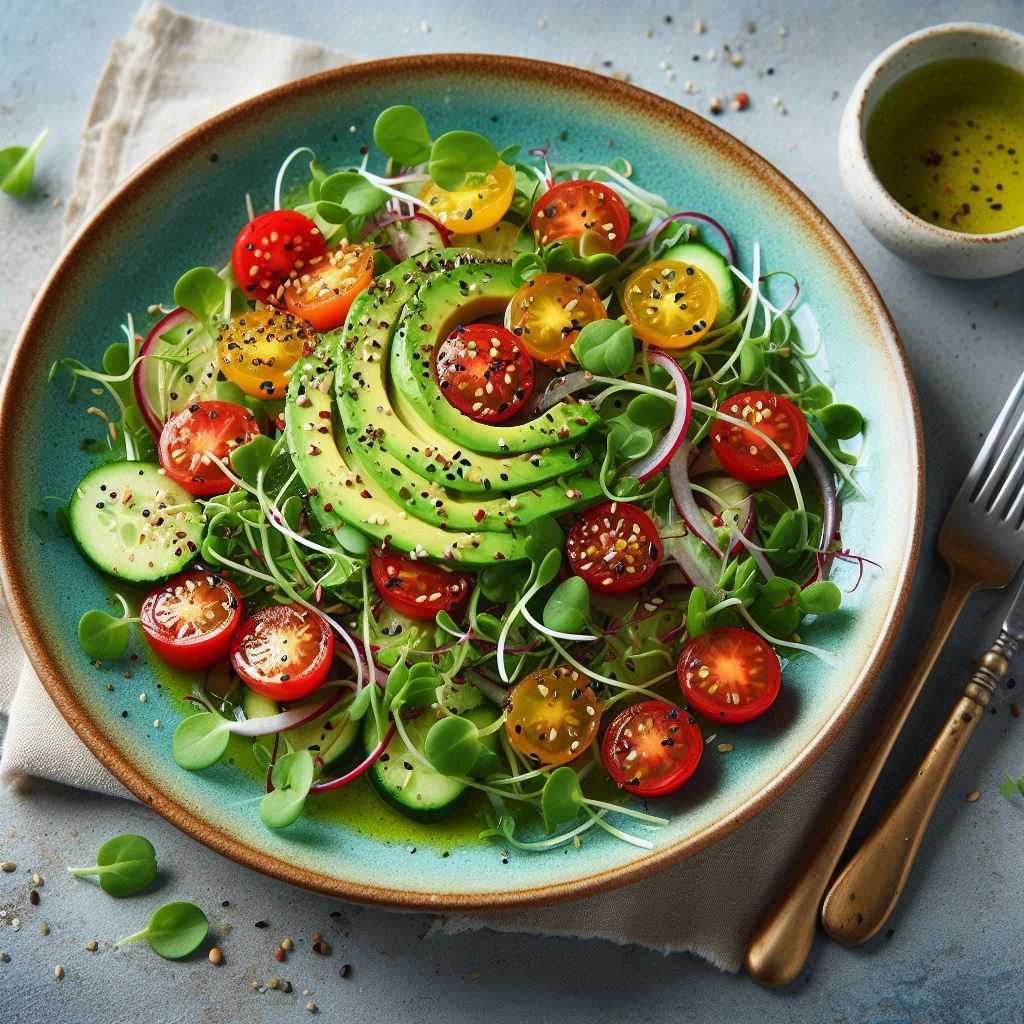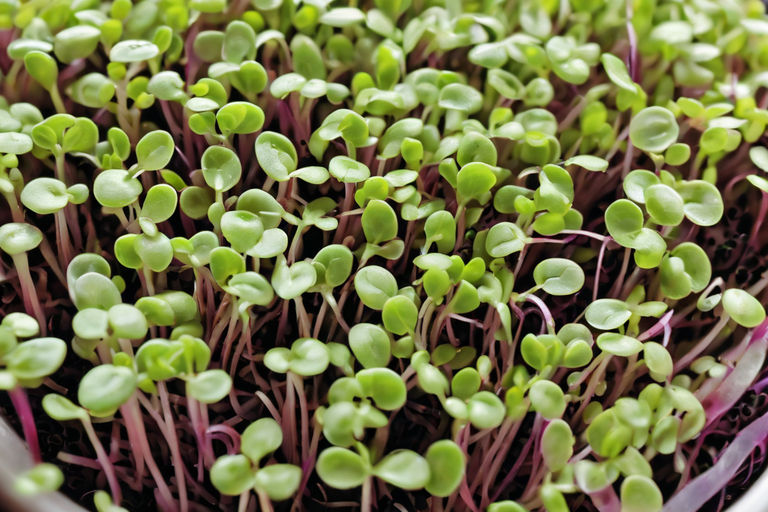Imagine a vibrant garden thriving on your kitchen countertop, bursting with flavor and packed with nutrients. Welcome to the world of microgreens—tiny powerhouses of taste and health that have taken the culinary scene by storm. These miniature versions of vegetables and herbs, harvested early in their growth, are more than just a trendy garnish; they represent a movement towards fresher, homegrown food that can elevate any meal. With an explosion of colors and flavors ranging from peppery radish to delicate basil, microgreens invite chefs and home cooks alike to explore the art of cooking with nature’s most concentrated gifts.
But what exactly are these petite greens, and why should you consider incorporating them into your diet? Beyond their aesthetic appeal lies a treasure trove of benefits that can enhance your meals and overall well-being. Packed with vitamins, minerals, and antioxidants far exceeding those found in fully grown counterparts, microgreens offer an easy way to boost nutrition without sacrificing flavor. As we delve deeper into this fascinating topic, you’ll discover how these small plants can significantly impact your health while inspiring creativity in the kitchen. Join us as we uncover the wonders of microgreens—the superfood revolution right at your fingertips!
Microgreens For Health
Microgreens are not just a culinary trend; they embody the spirit of health and sustainability, offering a powerhouse of nutrients packed into tiny leaves. These miniature plants—radish to broccoli—are typically harvested just after the first true leaves develop, generally within 7 to 14 days post-seeding. With concentrations of vitamins, minerals, and antioxidants often exceeding those found in their mature counterparts, microgreens serve as a delicious yet potent addition to salads, sandwiches, and smoothies. Their vibrant colors and diverse flavors elevate dishes while contributing significantly to your daily nutrient intake.
Health Benefits
While research is ongoing, microgreens are believed to offer several potential health benefits, including:
- Antioxidant Boost: Protecting your cells from damage.
- Inflammation Reduction: Supporting overall health.
- Improved Nutrient Intake: Providing essential vitamins and minerals.
Microgreens: Tiny Powerhouses
What are Microgreens?
Microgreens are edible young plants harvested just after the first true leaves appear.
They typically reach a height of about 1 to 3 inches. While they might seem small, they pack a nutritional punch!

Nutritional Powerhouses
- Nutrient-Dense: Microgreens often contain significantly higher levels of vitamins, minerals, and antioxidants than their mature counterparts.
- Variety: They come in a wide range of flavors and colors, adding diversity to your diet.
- Quick Growth: You can enjoy fresh, homegrown produce in a matter of weeks.
Popular Microgreen Varieties
- Radish
- Sunflower
- Broccoli
- Kale
- Arugula
- Pea
- Basil
- Mustard
What is the difference between micro greens and sprouts?
The difference between micro greens and sprouts lies in their growth stages and flavor profiles. Micro greens are the young shoots of vegetables and herbs that are harvested after they have grown their first true leaves. They are known for their vibrant colors, delicate textures, and concentrated flavors. On the other hand, sprouts are the germinated seeds of plants that are harvested before they develop leaves. They are typically crunchy, juicy, and have a milder taste compared to micro greens. Both are nutritious and a tasty addition to salads, sandwiches, and dishes, but each offers a unique culinary experience that adds a wonderful touch to any meal.
- Microgreens are cultivated in soil, while sprouts develop in water.
- Both the leaves and stems of microgreens are edible, whereas sprouts consist of edible stems and seeds.
- The growth period for microgreens varies by type, typically ranging from one to three weeks, whereas sprouts can be ready for harvest in less than a week.
Growing Microgreens
Growing microgreens is surprisingly easy and rewarding:
- Choose Your Seeds: Select a mix of seeds or focus on a specific variety.
- Growing Medium: Use a seed starting mix or a sterile soil-less medium.
- Planting: Lightly cover the seeds with the growing medium.
- Light and Water: Provide ample indirect light and mist the seeds regularly.
- Harvest: Harvest once the first true leaves appear, typically within 7-21 days.
Growing microgreens is an empowering experience that can be effortlessly undertaken in small spaces—from windowsills to countertops. All you need is some soil or a growing medium, seeds specific for microgreens, and water. In little more than a week, you’ll witness the transformation from seed to sprout: an inspiring journey that connects us back to nature’s cycles in our busy lives. Cultivating these nutritious greens fosters mindfulness and encourages healthier eating—a perfect antidote for today’s fast-food culture. Whether adding them to your meals or sharing them with friends through homemade gift packs, growing microgreens ignites joy both in the act itself and in the health benefits they bring directly to your kitchen table.
Culinary Uses
Microgreens are incredibly versatile and can be added to a variety of dishes:
- Salads: Add a burst of flavor and color.
- Sandwiches: Elevate your sandwich game with a fresh and crunchy topping.
- Soups and Stews: Garnish with a sprinkle of microgreens for added texture.
- Smoothies: Boost your nutrient intake with a handful of microgreens.
- Decorative Purposes: Use them as edible garnishes for your dishes.
Tips for Enjoying Microgreens
- Rinse thoroughly before use.
- Experiment with different flavors and combinations.
- Store in the refrigerator in a sealed container.
Whether you’re a seasoned gardener or a beginner, growing microgreens is a fun and rewarding way to enjoy fresh, nutritious produce.
Microgreens are tiny powerhouses of nutrition that can significantly impact your health. These small plants are flavorful and packed with essential vitamins, minerals, and antioxidants that can boost your immune system and support overall health. Incorporating microgreens into your diet is a simple and delicious way to ensure you get a wide array of nutrients. Whether you sprinkle them on salads, sandwiches, or smoothie bowls, these vibrant greens will surely add a pop of color and a burst of health benefits to your meals. So why not give your body a boost with these nutrient-dense superfoods today? Your taste buds and your health will thank you!






Looking to add a little extra green to your diet? Look no further than microgreens! These tiny but mighty greens are packed full of nutrients and are sure to boost your health game. Plus, they make the perfect addition to any salad or sandwich – talk about a win-win! So skip the boring old lettuce and level up your meals with some microgreens. Your taste buds and your body will thank you!